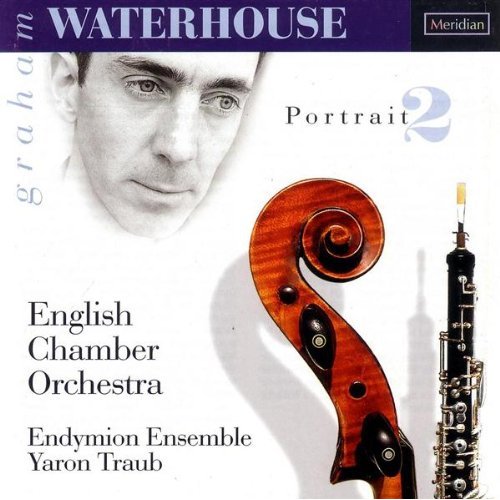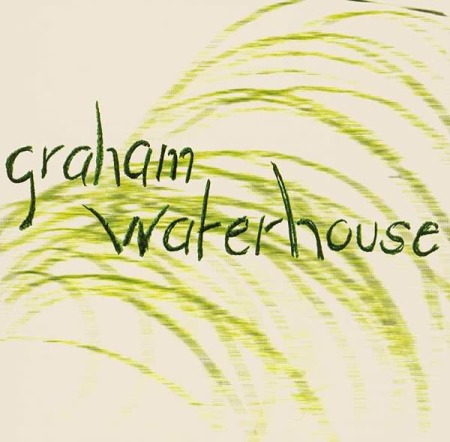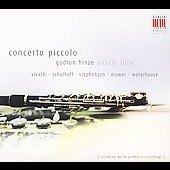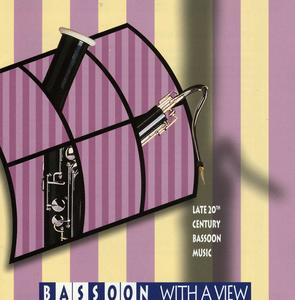CDs
Skylla und Charybdis
Farao classics, 2020
Die CD enthält Kammermusik für Klavier und Streicher, komponiert zwischen 1978 und 2014, mit dem Komponisten als Cellist:
Rhapsodie Macabre für Klavier und Streichquartett (2011)
Bei Nacht für Klaviertrio, op. 50 (1999)
Trilogy für Klavier und Streichquartett (2013)
Bells of Beyond für Klaviertrio (2013)
Kolomyka, from Polish Suite für Klaviertrio, op. 3 (1978)
Skylla und Charybdis für Klavierquartett (2014)
Zeichenstaub
2013
Die CD erschien 2013 mit der Veröffentlichung des Streichtrios Zeichenstaub und erhält auch Epitaphium.
Clément Courtin, Violine
Konstantin Sellheim, Viola
Graham Waterhouse, Violoncello
Graham Waterhouse - Portrait 3
(live im Gasteig, München, 2010)
Die CD ist ein Mitschnitt der Komponisten-Matinee am 11. April 2010 im Kleinen Konzertsaal des Gasteig, München, konzertante Musik für Mezzosopran, Flöte, Cello und Klavier.
Praeludium op. 32 (1992) für Klavier
Sechs späteste Lieder nach Hölderlin für Mezzosopran und Cello (2003)
Sicilian Air op. 56 für Flöte und Klavier (2003)
Gestural Variations op. 43c für Flöte, Violoncello und Klavier (1997/2009)
Apple Picking op. 5 (1979) & Moral Song op. 42 für Gesang und Klavier (1997)
Scherzino, Bagatelle, Barcarolle & Consternation für Klavier, aus Piano Album
Im Gebirg nach Hans Krieger für Alt, Altflöte, Violoncello und Klavier (2010)
Toccatina Precipitando für Flöte, Violoncello und Klavier (1997/2010)
Martina Koppelstetter (München), Mezzosopran
Jens Josef (Kassel), Flöte
Graham Waterhouse, Violoncello
Christopher White (London), Klavier
Graham Waterhouse - Portrait 2
2004

Die CD enthält Werke für Streichorchester, gespielt vom English Chamber Orchestra und für Bläserensemble, gespielt von Endymion.
Der Produzent schrieb dazu:
The emphasis in his compositional output to date has been chamber music and instrumental concertos. As a practising instrumentalist himself, he is drawn to the virtuosic elements of the instruments he writes for. He considers harmony as a driving force behind his music and tries to define form through harmonic means, while exploring beyond the framework of tonality. Structural clarity is the determining factor that allows music to be experienced. Neither the "message" of the piece nor its emotional content is determined by extra-musical considerations, but rather by the contrast and interplay of formal forces - such as the logical development of the thematic material, the intertwining and ramification of the motive, and the succeeding of tension by relaxation. For him, tradition is not merely ballast to be jettisoned, but something that can still stimulate when developed in a lively, contemporary way.
Chieftain’s Salute op. 34a (2001)
Sinfonietta op. 54 (2002)
Mouvements d’Harmonie op. 29 (1991)
Celtic Voices op. 36/1 (1995)
Hymnus op. 49 (1998)
Hale Bopp op. 36/2 (1997)
Jig, Air and Reel op. 9 (1982/1997)
Näheres zur CD Graham Waterhouse - Portrait 2, Meridian, 2004, mit einer Rezension von Hubert Culot hier, Zitate:
"… the Highland Bagpipe is treated with much respect. It is not used merely for added instrumental colour … It is a real partner in this virile, rousing piece of music, which I enjoyed enormously. …
This is music that can be delightfully simple as well as rather more demanding. It definitely repays repeated hearings."
Eine weitere Rezension von Ivan March erschien in "Gramophone Archive", Oktober 2004:
Waterhouse
An appealing collection by a composer in the great British string traditionA most stimulating collection and, for me, another satisfying composer with a distinctive soundworld. Graham Waterhouse (the son of the bassoonist, William, writes within the tradition of English string music in a style that is diatonic but with stimulating, pungent textures. The concise Sinfonietta is initially athletic and astringent, the Adagio then neo-Romantic, the Scherzo a fiddle-dominated folk dance and the finale a moto perpetuo in 12/8 time.
Celtic voices similarly balances virtuosity with lyricism and dips into the Phrygian mode to establish its underlying harmonic flavour. Hale Bopp celebrates the appearance of the comet in 1997, at first mystically, later suggesting increasing momentum. It incorporates an atmospheric setting of 'How brightly shines the Morning Star', sung in a distance by a treble and accompanied by a string quartet.
Waterhouse's writing for woodwind and horns in Mouvements d'Harmonie has a tangy, 20th-century Gallic flavor. The solemn sonorities of Hymnus are also haunting; the choral itself recalls a famous carol. But the novelty here is Chieftain's Salute, which would bring the house down at a BBC prom, a concertante work for 'great highland bagpipe' (marvellously played by Graham Weller) and strings. After an introductory 'Scottish Snap', the piper moves through a set of variations on the 17th-century lament, Lady Doyle's Salute, with increasing complex figurations.
The disc ends with simple arrangements of three folk tunes, Roger de Coverley, the ravishing Star of the Country Down and Devil among the Tailors. First-class playing throughout and excellent recording, bright but in an attractively spacious accoustic. I urge you hear this rewarding CD - you will not be disappointed.
Records International schrieb im August 2004:
This is all very appealing music, whether the works for strings or the works for wind ensemble, and almost none of it is regressively folky in the cow-staring-over-the-fence manner (the Jig, Air and Reel, an early work of 1983 is as close as Waterhouse gets to this). The 2002 Sinfonietta may take its place among quality English string orchestra works of the post World War II period, harmonically bracing and rhythmically compelling and even the Chieftain's Salute is a bit more than a stunt (although balance will always be a problem where this instrument is concerned).
Graham Waterhouse - Portrait
2001

Die CD enthält Kammermusik für kleine Besetzung, Solo-, Duo- und Trio-Stücke für Blockflöte, Klavier, Klarinette und Cello, Graham Waterhouse wirkt selbst als Cellist mit.
Näheres zur CD Graham Waterhouse - Portrait, Cybele Records, 2001, mit Klangbeispiel finden Sie
hier.
Der Produzent schrieb dazu:
Anyone who has heard his Cello Concerto op. 27 will be aware of the mastery with which Graham Waterhouse handles the resources of the symphony orchestra. Nonetheless it is clearly to chamber music that he feels most drawn - and it is this that occupies the major part of his already extensive oeuvre. The intimacy of small instrumental combinations and the sense of dialogue between individuals appeal in particular to his musical sensibilities. By and large he has remained impervious to an avant-garde advocating innovation at all costs. Son of a well-known family of London musicians, he was brought up in a tradition of practical music-making. He has always remained true to this tradition. The composer Graham Waterhouse seems to display an apparently endless imagination both in his thematic inventiveness and in his sense of formal structure. It is perhaps due to this that his works are sought after by many ensembles. A considerable number of his chamber music works are commissions, tailor-made for particular musical colleagues; mere occasional pieces they certainly are not. The tonal possibilities of each instrument are exploited to their very limits. Besides imparting a sense of the sheer joy of music-making, the music always carries a clear message - this is music that is truly expressive.
Praeludium for Piano op. 32 (1992)
Three Pieces for Solo Cello op. 28 (1996)
Contraventings for Clarinet op. 46a (1998)
Le Charmeur de Serpents op. 39 for Alto and Sopranino Recorder (1997)
Scherzino for Piano op. 24/2 (1984)
bow 'n blow for Clarinet and Cello (1996)
Vezza, Limerick for Cello and Speaking Voice (1995)
Gestural Variations for Clarinet, Violoncello and Piano op. 43a (1997/99)
Toccatina Precipitando for Clarinet, Violoncello and Piano op. 24bis (1985/98)
Agnès Marc, Blockflöte
Michael Wendeberg, Klavier
Markus Schön, Klarinette
Graham Waterhouse, Violoncello
Eine Rezension dieser Aufnahme von Hubert Culot (Juli 2004) hier, Zitat:
"Needless to say that all performances here, either with the composer or with his being around at the time of the recording, are superbly played throughout and – no doubt – serve Waterhouse’s well written and attractive music well."
Im Anschluss an einen Rückblick auf das Konzert The Proud Bassoon am 16. April 2011 in Wigmore Hall rezensierte Peter Grahame Woolf auch die CD mit Kammermusikwerken, Zitat:
"Graham, virtuoso cellist and intense, expressive composer, who eschews recondite 'originality' as a prime diseratum, should nonetheless be better known in England.
Einzelwerke aus Sammlungen
Piccolo-Quintett
Das Quintett für Piccolo und Streichquartett op. 26 erschien auf einer CD,concerto piccolo.

Näheres hier.
Patricia Morris schrieb im Magazin pan-flute:
This is a very enjoyable combination of fine playing from Gudrun Hinze and from members of the Leipzig Gewandhaus Orchestra. The result is very satisfying musically and there is some really interesting repertoire. The Quintet by Graham Waterhouse has particularly exciting experiments with the mix of colours available to this combination and produces lovely expressive music.
Christina Humberger schrieb in das Orchester 02/2007 über exquisite selten zu hörende Konzerte:
… man … hört … das verspielte Klangausloten im kammermusikalischen Dialog bei Graham Waterhouse …
Aztec Ceremonies
Aztec Ceremonies op. 37 erschien auf einer CDBASSOON WITH A VIEW.

'rohrblatt schrieb im März 2000:
Der Höhepunkt der CD ist fraglos Aztec Ceremonies … demonstriert höchst eindrucksvoll, zu welch expressivem und gleichzeitig virtuosem Spiel das Kontrafagott fähig ist. Waterhouse hat mit diesem Stück ein Pflichtstück für jeden Kontrafagottisten geschaffen.